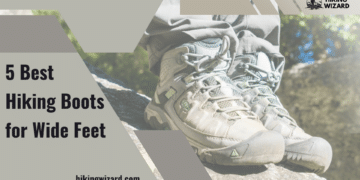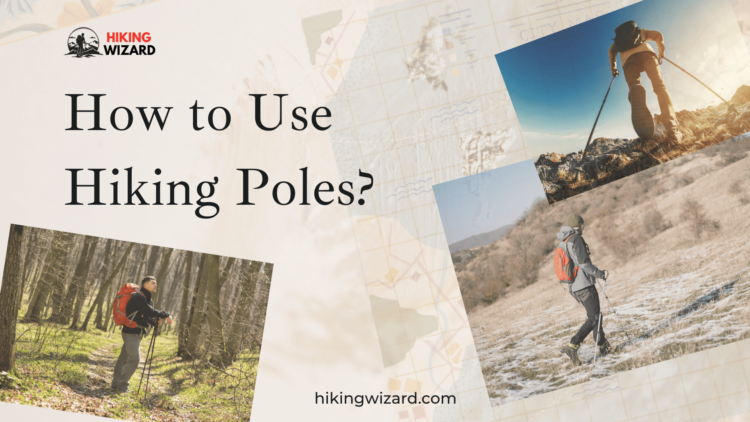Hey, adventure seekers! Ready to trade your cozy couch for winding trails and epic views? Before you set off to conquer nature’s playground, let’s talk about the unsung hero of every hiker’s gear: the hiking pole. Sure, it may look like just a stick, but it’s basically the Gandalf of the hiking world, shouting, ‘You shall not fall!’ So whether you’re trekking through Salt Lake City’s scenic routes or tackling Big Bear Lake’s rugged charm, let’s gear up and learn how to make the most of this trusty trail companion. Adventure awaits; let’s get moving and learn how to use hiking poles.
Hiking Sticks – A Great Support

Hiking sticks or simply poles are multipurpose equipment with several advantages for hikers of all levels. You’d not be able to traverse the rugged paths on your own. Although you might feel a little confident with your high-quality boots, hiking poles are what you need for stability on the terrain. They boost overall hiking efficiency, offer stability, and lessen joint strain. Knowing how to use hiking poles properly can make a big difference in your outdoor experience, whether you’re traversing difficult terrain or taking a leisurely stroll through the woods. So, before learning how to use trekking sticks, let’s discuss the different types.
Hiking Pole Types
Well, just imagine how weird it would be if you were using trekking poles and didn’t know which one was in your hand. Let’s have a look at different types.
Trekking Poles
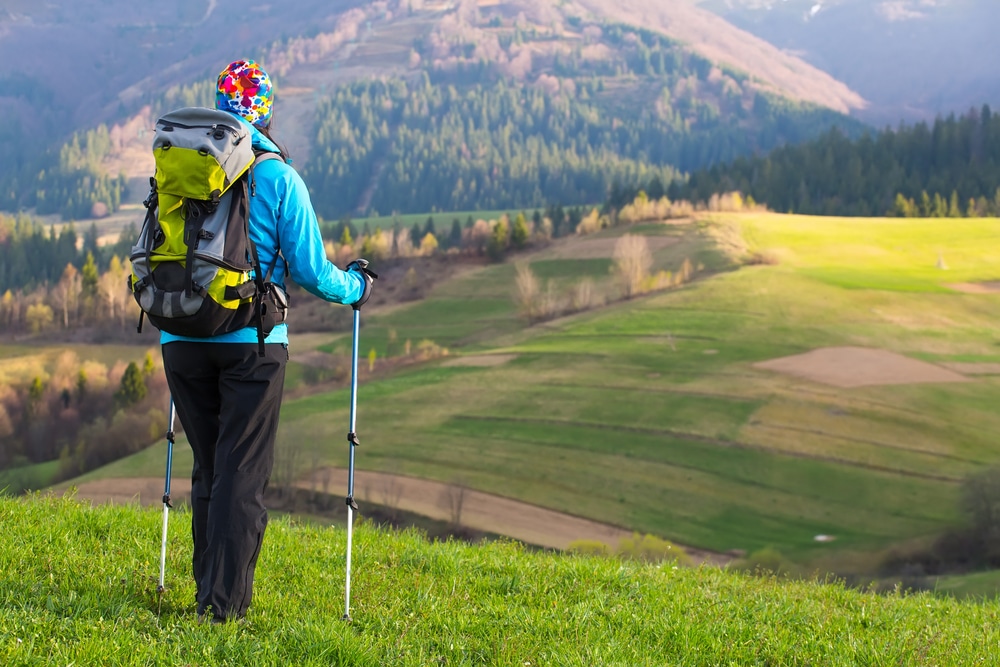
Description: Typically used for normal hiking and backpacking, these are the most popular kinds of hiking poles.
- Features: Wrist straps, adjustable lengths, and cozy grips make them appropriate for a range of surfaces.
- Adequacy: Perfect for hikers seeking stability and adaptability on a variety of trails.
Nordic Walking Poles
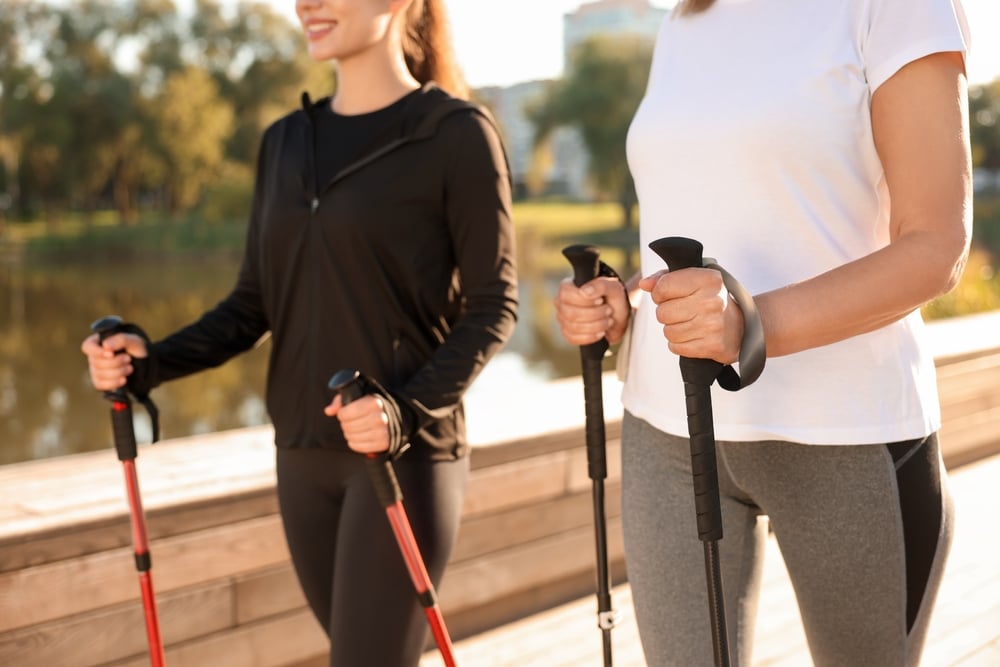
Purpose: Specially made for Nordic walking, which is a fitness walk in which upper body muscles are worked out with poles.
- Features: Comfortable grips, customized straps made for a certain gait pattern, and lightweight design.
- Advantages: Offers a full-body workout, improves cardiovascular benefits, and encourages improved posture.
Mountaineering Poles
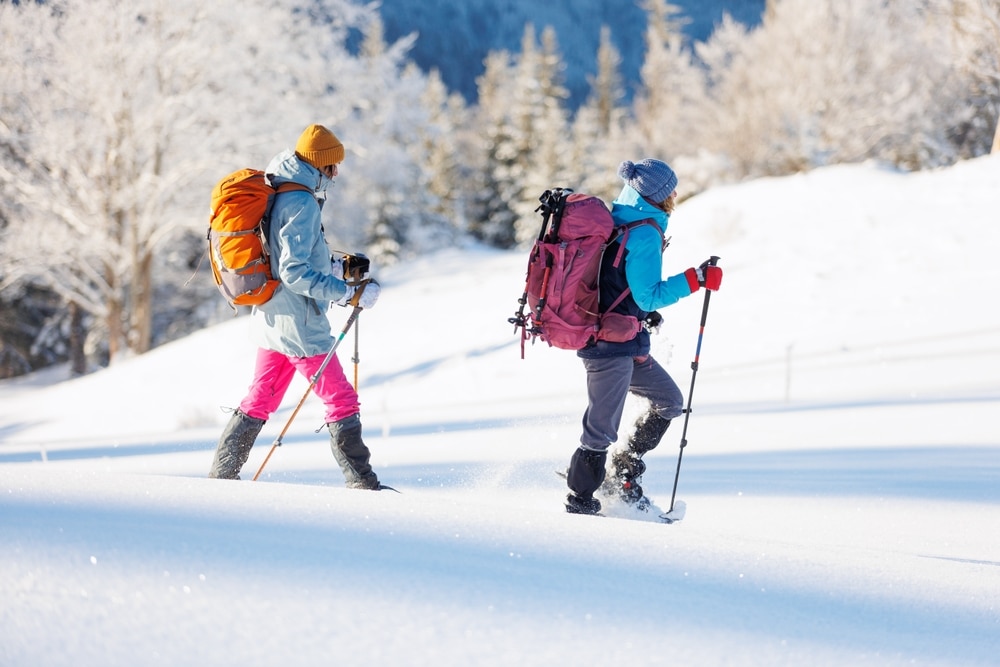
Design: Sturdy and robust, made for harsh environments and challenging types of terrains.
- Features: Extended grips for steep descents and ascents; adjustable baskets for various terrain kinds.
- Adequacy: Ideal for hikers and mountaineers venturing into rugged or snowy terrain.
Fixed-Length Poles
Design: They are lightweight and lacking in adjustable sections, making them the go-to option for trail runners and weight-conscious individuals.
- Limitation: Less versatile than adjustable poles for different terrains.
Folding Poles
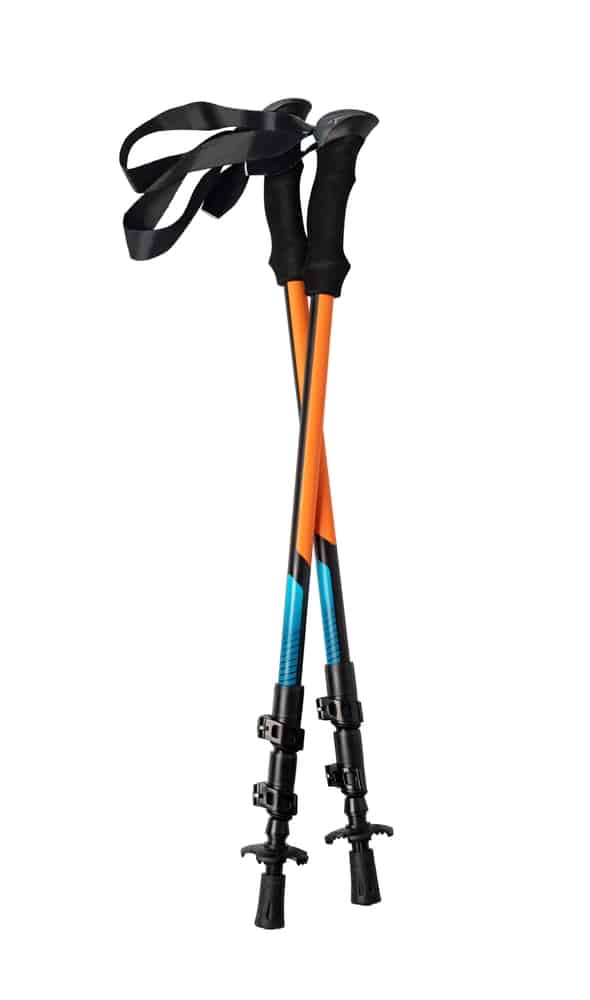
Build: Folds up easily for carrying and storing, perfect for travelers or those who don’t have a lot of room to pack.
- Trade-Off: Generally lighter than conventional trekking poles, but you might give up some durability in the process.
Hiking Pole Length
Now that we have discussed different hiking poles, the next thing you need to know is their length. You can go for adjustable poles where you can easily adjust the length as per your needs. Doing this can maximize your efficiency and help you remain confident and stable throughout the trek. Moreover, properly adjusted poles ease your body’s tension and improve balance.
Determining the Correct Length
Method: Hold poles with tips on the ground while standing with your elbows bent at a 90-degree angle.
- Calculation: To find the ideal pole length in inches, multiply your height in inches by 0.68.
- Goal: Establish a comfortable and natural arm position that helps in maintaining your balance and gait.
Customizable Lengths
To suit various terrains and tastes, the majority of trekking poles feature adjustable lengths.
Techniques
Check the techniques below.
- Uphill: To preserve an erect stance and increase leverage, shorten the pole slightly.
- Downhill: Lengthen the pole to stabilize and lessen the force on your knees as you descend.
Changing the Pole Length
You can adjust the length of the pole if you know how to do it. So, don’t worry if you are stuck in uneven terrain; just read this section and make your stick look however you want it to be.
Locking Mechanisms
- Options: Lever locks, twist locks, and combination locks are among the types, each providing varying degrees of convenience and safety.
- Adjustment: Make sure that the poles are fastened firmly to avoid collapsing when heavy or during intense activity.
- On-the-Go Adjustments: As the terrain changes, quickly adjust to maintain the ideal pole length for stability and comfort. Knowing how to customize the pole length makes you step closer to using the walking poles correctly.
Selecting the Appropriate Hiking Poles
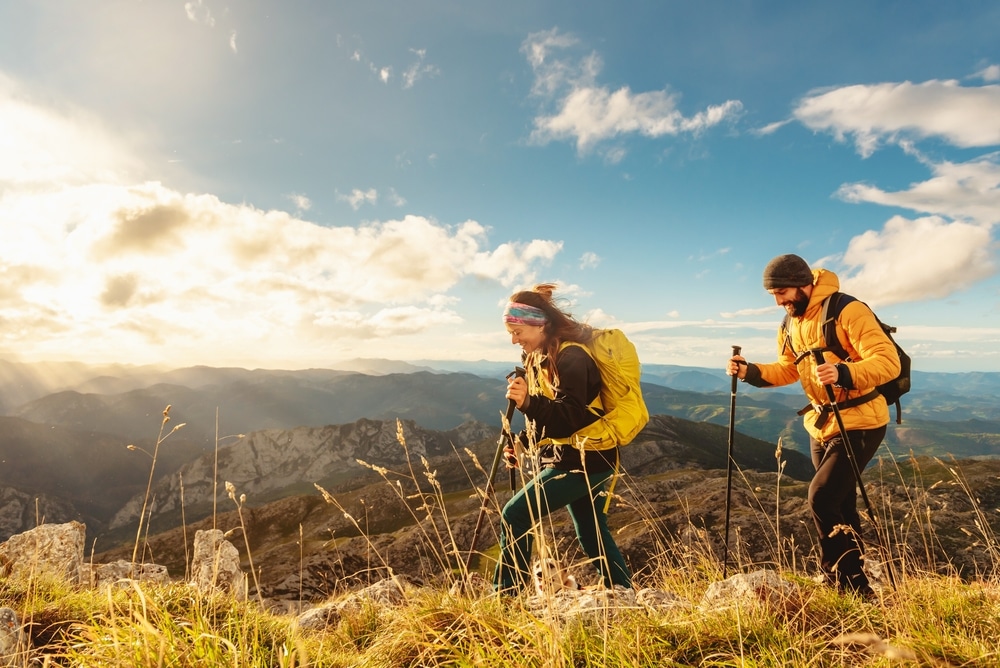
Choosing the right hiking poles can make or break your outdoor adventure, providing stability and reducing strain on your joints.
Grip Materials
The grip of your hiking pole determines comfort and usability during long treks.
- Cork Grips: Convenient, moisture-wicking, and shaped to fit the hand over time, these grips are perfect for extended hikes.
- Foam Grips: These are lightweight, sweat-absorbing, and ideal for hot areas; however, they might wear out sooner.
- Rubber Grips: Blisters can occur if hands become sweaty; however, these grips are insulating and perfect for cooler weather.
Strap Design
A well-designed strap enhances comfort and ensures you don’t lose grip on your poles.
- The design of the straps is padded and adjustable, distributing pressure equally over the hands and wrists.
- Correct Adjustment: Straps should be able to support the poles for an extended period while allowing a comfortable grasp.
Material for Shaft
The material of the shaft directly impacts the pole’s weight, durability, and performance.
- Aluminum Poles: Sturdy and reasonably priced, ideal for everyday hiking and trekking.
- Carbon Fiber Poles: These poles are more expensive and vulnerable to impact damage but lighter and better at absorbing vibrations.
Fundamental Methods To Use Hiking Poles

There are many ways to use the hiking poles correctly, some of which are mentioned below:
Walking on Flat Terrain
Mastering flat terrain techniques with hiking poles can help you maintain a natural rhythm while walking.
- Technique: Plant both poles opposite to your leading foot and let them swing naturally with each stride.
- Features: Improves stability and rhythm, eases the burden on lower body joints, and evenly distributes work among the muscles of the upper body.
Getting Uphill
When climbing uphill, the correct use of hiking poles can significantly reduce strain on your legs.
- Pole Adjustment: When learning to use trekking sticks, length customization is something to focus on. Shorten the pole a little to keep your posture straight and increase your leverage.
- Technique: To push off the ground and lessen pressure on leg muscles, firmly plant poles with each step.
Descending Hills
Proper technique and pole adjustment during descents can protect your knees and enhance control.
- Pole Adjustment: Lengthen the pole to lessen knee impact and add stability.
- Approach: To help with your descent, regulate your speed, and keep your balance, plant poles ahead of your body.
Crossing Uneven Terrain or Streams
Hiking poles are essential for navigating tricky terrain or crossing streams safely.
- Use the Poles: You can use the walking sticks to traverse the rugged paths successfully. Before crossing, check the water’s depth or the stability of the rocks.
- Technique: Firmly plant poles to help with balance when negotiating uneven or slick terrain.
Advanced Methods to Use Hiking Poles
For your ease, I have also listed some of the advanced techniques regarding the use of hiking poles.
Double Pole Plant
The double pole plant technique is perfect for boosting your efficiency and speed on flat or mildly sloping terrain.
- Technique: With each step, plant both poles simultaneously in front of you.
- Benefits: Effectively uses upper body strength to increase walking speed on flat or mildly sloping terrain.
Balancing with Poles
Enhancing balance in challenging sections is a breeze with this technique.
- Technique: To increase the width of your base of support on challenging sections, extend poles slightly ahead and to the sides.
- Advantages: Increases stability when navigating difficult terrain, rocky trails, and small paths.
Nordic Walking Method
This technique brings cardio benefits while making your hike more efficient.
- Stride: Lean back and plant poles to make longer strides.
- Push Off: To increase walking efficiency and burn calories, tighten your core muscles and employ your upper body strength.
Climbing and Scrambling
When faced with rocky or steep terrain, this method ensures stability and energy conservation.
- Grips: When climbing rocky or steep terrain, use extended grips for improved leverage.
- Method: To conserve energy and maintain stability, firmly plant poles and utilize them to pull yourself up as you step
However, if you want to know about the uses of hiking poles, check out this article.
Extra Tips for a Better Hiking Experience
I know mishaps don’t knock on the door, so better be prepared than regret later, right?
- Use Gaiters: Guard boots and lower legs from mud, water, and debris; especially helpful in muddy or wet weather.
- Posture Awareness: When hiking with poles, keep your back and shoulders less strained by maintaining proper posture.
- Basic Engagement: To improve balance and stabilize body motions, particularly on uneven terrain, engage your core muscles.
- Nutrition and Hydration: During longer treks and demanding climbs, keep yourself nourished with snacks and properly hydrated to sustain energy levels.
- Take Breaks: Plan frequent pauses to replenish fluids, recuperate, and modify pole settings to accommodate varying ground conditions.
- Route Planning: Learn about terrain profiles and trail maps so that you can anticipate variations in height and alter hiking pole techniques as necessary.
Conclusion
Summing up what has been discussed so far, the article covered a detailed discussion on what are hiking poles and how to use them correctly. If you are planning your next adventure in the outdoors, all you need is the right gear and our article guide to traverse the rugged paths with ease. Not only have we discussed different types of trekking poles, but we also have a detailed guide on how to adjust the length as per your needs. So, pick the ideal walking stick and learn about basic and advanced methods to use it correctly during your trekking.
Lace your Boots, and Pick the Stick!

